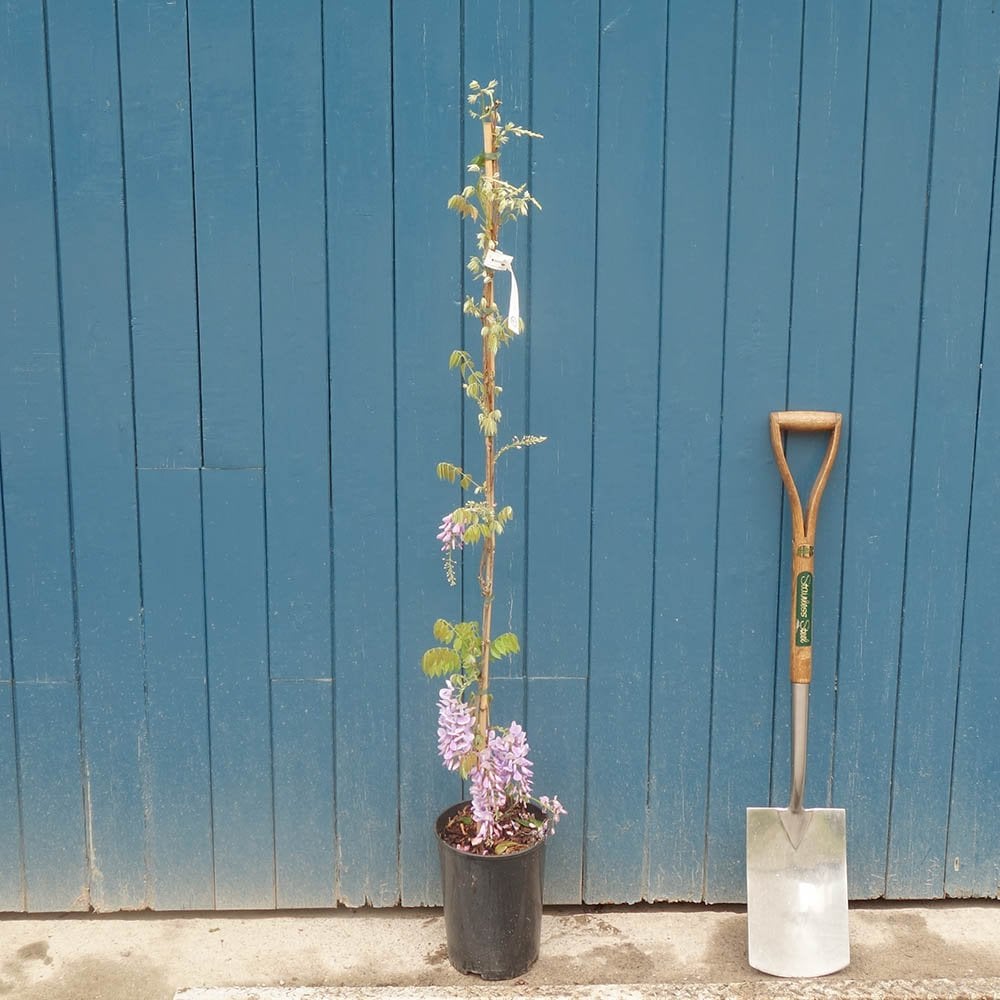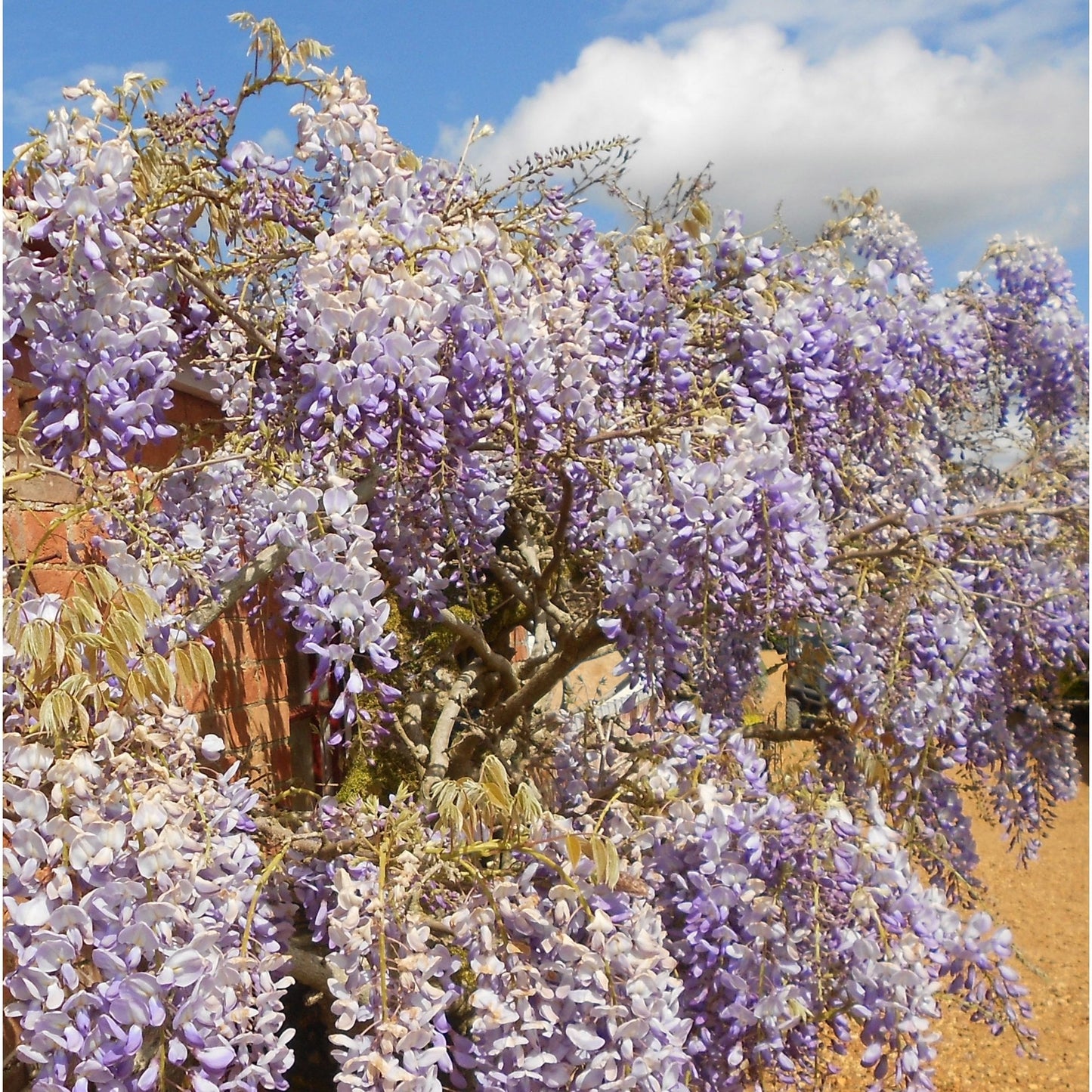Wisteria sinensis 'Prolific' Tree
Wisteria sinensis 'Prolific' Tree
Chinese Blue Wisteria

Wisteria sinensis 'Prolific' Tree
Chinese Blue Wisteria
Key features





Description
For flowers that appear just before the leaves, choose Wisteria sinensis 'Prolific', commonly known as Chinese Blue Wisteria. 'Prolific' produces long, heavy, drooping racemes of lilac-blue flowers in early summer. The pea-like flowers are highly scented and popular with bees and other pollinating insects. New foliage emerges bronze before turning bright green.
Wisteria sinensis 'Prolific' is a climbing Wisteria plant that can be grown to 8 x 10 metres in 20 years or kept much smaller. Any free draining soil will suit that is in full or partial sun. Ideal for growing over a pergola or against a sunny wall, Wisteria 'Prolific' provides rich scent and is popular with wildlife.
As with all our climbing Wisteria, this Chinese variety is grafted and tends to flower at a younger age than those grown from cuttings.
AKA Chinese Blue Wisteria, Blue Climbing Wisteria
| Small shrubs (1-3) | Young trees & 4+ small shrubs | Select semi-mature trees & shrubs (1-4) | All other mature trees (any quantity) | |
|---|---|---|---|---|
| Mainland UK ex. Scottish Highlands | £10 | £12 | £35 | from £55 |
| Scottish Highlands & the Islands | From £30 | |||
| Outside Mainland UK | Currently we are unable to deliver outside of Mainland UK | |||
Product Details
Key features





Description
For flowers that appear just before the leaves, choose Wisteria sinensis 'Prolific', commonly known as Chinese Blue Wisteria. 'Prolific' produces long, heavy, drooping racemes of lilac-blue flowers in early summer. The pea-like flowers are highly...
For flowers that appear just before the leaves, choose Wisteria sinensis 'Prolific', commonly known as Chinese Blue Wisteria. 'Prolific' produces long, heavy, drooping racemes of lilac-blue flowers in early summer. The pea-like flowers are highly scented and popular with bees and other pollinating insects. New foliage emerges bronze before turning bright green.
Wisteria sinensis 'Prolific' is a climbing Wisteria plant that can be grown to 8 x 10 metres in 20 years or kept much smaller. Any free draining soil will suit that is in full or partial sun. Ideal for growing over a pergola or against a sunny wall, Wisteria 'Prolific' provides rich scent and is popular with wildlife.
As with all our climbing Wisteria, this Chinese variety is grafted and tends to flower at a younger age than those grown from cuttings.
AKA Chinese Blue Wisteria, Blue Climbing Wisteria
Planting & Care
Delivery Information
| Small shrubs (1-3) | Young trees & 4+ small shrubs | Select semi-mature trees & shrubs (1-4) | All other mature trees (any quantity) | |
|---|---|---|---|---|
| Mainland UK ex. Scottish Highlands | £10 | £12 | £35 | from £55 |
| Scottish Highlands & the Islands | From £30 | |||
| Outside Mainland UK | Currently we are unable to deliver outside of Mainland UK | |||
MORE TO GROW YOUR GARDEN





















